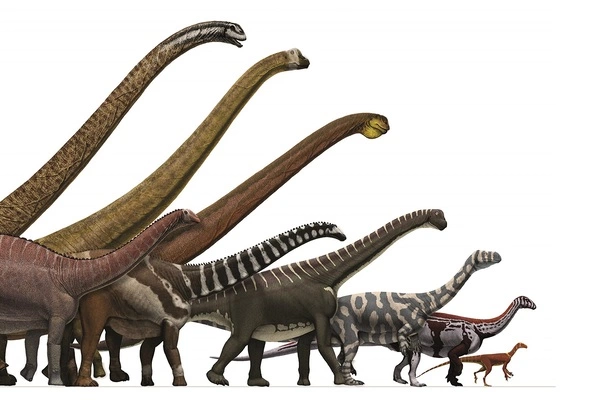Dinosaurs existed in the Triassic, Jurassic, and Cretaceous periods. The climate was much warmer during these periods, with CO2 levels more than four times higher than today. This resulted in an abundance of plant life, and herbivorous dinosaurs may have evolved large bodies as a result of the abundance of food. However, being large helps to protect against predators.
Scientists have solved a long-standing mystery by determining how sauropod dinosaurs like Brontosaurus and Diplodocus supported their massive bodies on land. A team led by the University of Queensland and Monash University used 3D modeling and engineering methods to digitally reconstruct and test the function of various sauropod foot bones.
Dr Andréas Jannel conducted the research during his Ph.D. studies at UQ’s Dinosaur Lab, and the team discovered that sauropod hind feet had a soft tissue pad beneath the ‘heel,’ cushioning the foot to absorb their immense weight.
“We’ve finally confirmed a long-suspected idea, and we provide biomechanical evidence for the first time that a soft tissue pad – particularly in their back feet – would have played a critical role in reducing locomotor pressures and bone stresses,” Dr. Jannel said.
“It’s mind-boggling to think that these enormous creatures could have supported their own weight on land.”
We’ve finally confirmed a long-suspected idea, and we provide biomechanical evidence for the first time that a soft tissue pad – particularly in their back feet – would have played a critical role in reducing locomotor pressures and bone stresses.
Dr. Jannel
Sauropods were the largest terrestrial animals that roamed the Earth for more than 100 million years. The discovery of sauropod tracks in terrestrial deposits in the mid-twentieth century proved that they were not semi-aquatic, with water buoyancy supporting their massive weight.
According to Dr. Olga Panagiotopoulou of Monash University, sauropods had feet similar to modern elephants. “Popular culture — think Jurassic Park or Walking with Dinosaurs — frequently depicts these behemoths with almost-cylindrical, thick, elephant-like feet,” Dr Panagiotopoulou said.
“But when it comes to their skeletal structure, elephants are actually ‘tip-toed’ on all four feet, whereas sauropods have different foot configurations in their front and back feet. Sauropod’s front feet are more columnar-like, while they present more ‘wedge high heels’ at the back supported by a large soft tissue pad.”

To grow large enough to be safe from carnivores like T. rex and Spinosaurus, the giant sauropods had to eat plants as quickly as they could. Meanwhile, carnivores were growing in size in order to take on their massive prey. Another possibility is that the herbivorous dinosaurs were ectothermic (cold blooded), and their size aided in temperature regulation. This theory is problematic, however, because evidence suggests that large carnivores were endothermic (warm blooded), implying that dinosaurs evolved two distinct metabolic systems side by side.
According to UQ Associate Professor Steve Salisbury, this is because sauropods and elephants evolved at different times.
“Elephants belong to an ancient order of mammals called proboscideans, which first appeared in Africa roughly 60 million years ago as small, nondescript herbivores, ” Associate Professor Salisbury said.
“In contrast, sauropods — whose ancestors first appeared 230 million years ago — are more closely related to birds. They were agile, two-legged herbivores and it was only later in their evolution that they walked on all fours. Crucially, the transition to becoming the largest land animals to walk the earth seems to have involved the adaptation of a heel pad.”
The researchers intend to use 3D modeling and engineering methods to make additional discoveries. “I’d like to apply a similar method to an entire limb and include additional soft tissue like muscles, which are rarely preserved in fossils,” Dr. Jannel said.
“We’re also looking forward to investigating the limbs and feet of other prehistoric animals. This should enable us to answer various questions about the biomechanics of extinct animals and gain a better understanding of their environmental adaptations, movement, and lifestyle.”





